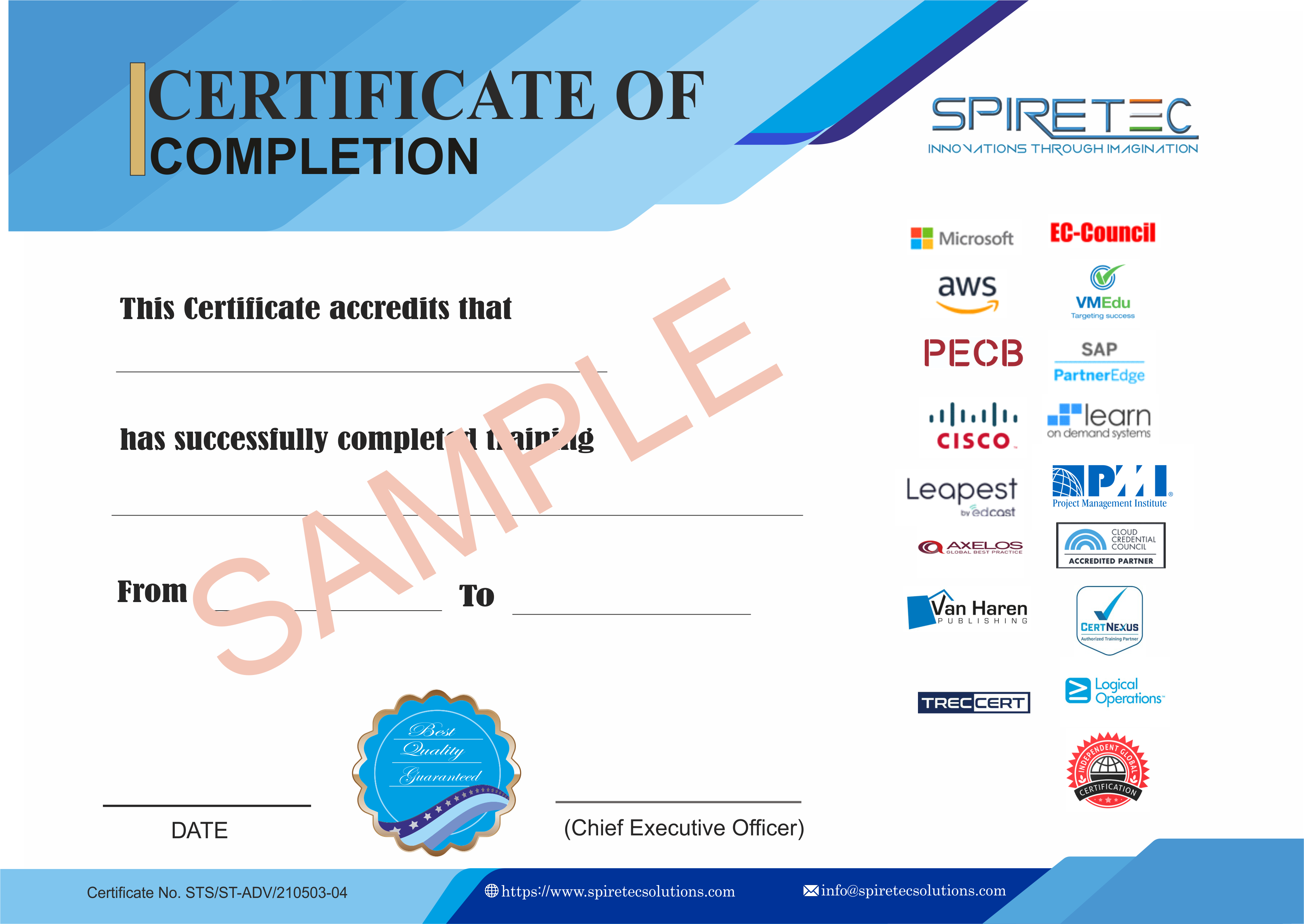The DP-700T00: Microsoft Fabric Data Engineer course empowers professionals to design, implement, and manage data solutions using Microsoft Fabric. Explore advanced capabilities like dataflows, pipelines, real-time eventstreams, and lakehouses for scalable analytics. Learn to optimize data management with medallion architecture, secure data access, and administer environments effectively. Hands-on labs and real-world scenarios ensure practical expertise. Unlock the full potential of Microsoft Fabric to deliver end-to-end data engineering solutions.
Course Objectives:
-
Ingest and transform data using Dataflows Gen2 in Microsoft Fabric.
-
Build and monitor data pipelines for seamless orchestration.
-
Capture, analyze, and visualize real-time event data with Eventstreams.
-
Create lakehouses and query data with Spark and SQL.
-
Implement medallion architecture for efficient data organization.
-
Secure data access and manage permissions within Microsoft Fabric.
-
Develop real-time dashboards for actionable insights.
-
Automate deployments with CI/CD and monitor activities using Monitoring Hub.
Target Audience
This audience for this course is data professionals with experience in data extraction, transformation, and loading. DP-700 is designed for professionals who need to create and deploy data engineering solutions using Microsoft Fabric for enterprise-scale data analytics. Learners should also have experience at manipulating and transforming data with one of the following programming languages: Structured Query Language (SQL), PySpark, or Kusto Query Language (KQL).
Course Outline:
Implement a Data Warehouse with Microsoft Fabric
Get started with data warehouses in Microsoft Fabric
-
Describe data warehouses in Fabric
-
Understand a data warehouse vs a data Lakehouse
-
Work with data warehouses in Fabric
-
Create and manage fact tables and dimensions within a data warehouse
-
Lab: Analyze data in a data warehouse
Load data into a Microsoft Fabric data warehouse
-
Learn different strategies to load data into a data warehouse in Microsoft Fabric
-
Learn how to build a data pipeline to load a warehouse in Microsoft Fabric
-
Learn how to load data in a warehouse using T-SQL
-
Learn how to load and transform data with dataflow (Gen 2)
-
Lab: Load data into a warehouse in Microsoft Fabric
Query a data warehouse in Microsoft Fabric
-
Use SQL query editor to query a data warehouse
-
Explore how visual query editor works
-
Learn how to connect and query a data warehouse using SQL Server Management Studio
-
Lab: Query a data warehouse in Microsoft Fabric
Monitor a Microsoft Fabric data warehouse
-
Monitor capacity unit usage with the Microsoft Fabric Capacity Metrics app
-
Monitor current activity in the data warehouse with dynamic management views
-
Monitor querying trends with query insights views
-
Lab: Monitor a data warehouse in Microsoft Fabric
Secure a Microsoft Fabric data warehouse
-
Learn the concepts of securing a data warehouse in Microsoft Fabric
-
Learn how to implement dynamic data masking to obscure sensitive information
-
Learn how to configure row-level security to provide granular control
-
Learn how to implement column-level security to protect sensitive data
-
Learn how to configure granular permissions using T-SQL
-
Lab: Secure a warehouse in Microsoft Fabric
Ingest Data with Microsoft Fabric
Ingest Data with Dataflows Gen2 in Microsoft Fabric
-
Describe Dataflow capabilities in Microsoft Fabric
-
Create Dataflow solutions to ingest and transform data
-
Include a Dataflow in a pipeline
-
Lab: Create and use a Dataflow Gen2 in Microsoft Fabric
Orchestrate processes and data movement with Microsoft Fabric
-
Describe pipeline capabilities in Microsoft Fabric
-
Use the Copy Data activity in a pipeline
-
Create pipelines based on predefined templates
-
Run and monitor pipelines
-
Lab: Ingest data with a pipeline
Get started with Real-Time Intelligence in Microsoft Fabric
-
Microsoft Fabric includes Real-Time Intelligence capabilities that you can use to capture, analyze, visualize, and act on real-time streams of event data
-
Lab: Explore Real-Time Intelligence in Fabric
Use real-time eventstreams in Microsoft Fabric
-
Establish source and destinations in Microsoft Fabric Eventstreams
-
Capture, transform, and route data using Microsoft Fabric Eventstreams
-
Lab: Ingest real-time data with Eventstream in Microsoft Fabric
Work with real-time data in a Microsoft Fabric eventhouse
-
Create an eventhouse in Microsoft Fabric
-
Query real-time data by using Kusto Query Language (KQL)
-
Create materialized views and stored functions in a KQL database
-
Lab: Work with data in a Microsoft Fabric eventhouse
Implement a Lakehouse with Microsoft Fabric
Introduction to end-to-end analytics using Microsoft Fabric
Get started with lakehouses in Microsoft Fabric
-
Describe core features and capabilities of lakehouses in Microsoft Fabric
-
Create a lakehouse
-
Ingest data into files and tables in a lakehouse
-
Query lakehouse tables with SQL
-
Lab: Create a Microsoft Fabric lakehouse
Use Apache Spark in Microsoft Fabric
-
Configure Spark in a Microsoft Fabric workspace
-
Identify suitable scenarios for Spark notebooks and Spark jobs
-
Use Spark dataframes to analyze and transform data
-
Use Spark SQL to query data in tables and views
-
Visualize data in a Spark notebook
-
Lab: Analyze data with Apache Spark
Work with Delta Lake tables in Microsoft Fabric
-
Understand Delta Lake and delta tables in Microsoft Fabric
-
Create and manage delta tables using Spark
-
Optimize delta tables
-
Use Spark to query and transform data in delta tables
-
Use delta tables with Spark structured streaming
-
Lab: Use delta tables in Apache Spark
Ingest Data with Dataflows Gen2 in Microsoft Fabric
-
Describe Dataflow capabilities in Microsoft Fabric
-
Create Dataflow solutions to ingest and transform data
-
Include a Dataflow in a pipeline
-
Lab: Create and use a Dataflow Gen2 in Microsoft Fabric
Orchestrate processes and data movement with Microsoft Fabric
-
Describe pipeline capabilities in Microsoft Fabric
-
Use the Copy Data activity in a pipeline
-
Create pipelines based on predefined templates
-
Run and monitor pipelines
-
Lab: Ingest data with a pipeline
Organize a Fabric lakehouse using medallion architecture design
-
Describe the principles of using the medallion architecture in data management
-
Apply the medallion architecture framework within the Microsoft Fabric environment
-
Analyze data stored in the lakehouse using DirectLake in Power BI
-
Describe best practices for ensuring the security and governance of data stored in the medallion architecture
-
Lab: Organize your Fabric lakehouse using a medallion architecture
Implement Real-Time Intelligence with Microsoft Fabric
Get started with Real-Time Intelligence in Microsoft Fabric
-
Microsoft Fabric includes Real-Time Intelligence capabilities that you can use to capture, analyze, visualize, and act on real-time streams of event data
-
Lab: Explore Real-Time Intelligence in Fabric
Use real-time eventstreams in Microsoft Fabric
-
Establish source and destinations in Microsoft Fabric Eventstreams
-
Capture, transform, and route data using Microsoft Fabric Eventstreams
-
Lab: Ingest real-time data with Eventstream in Microsoft Fabric
Work with real-time data in a Microsoft Fabric eventhouse
-
Create an eventhouse in Microsoft Fabric
-
Query real-time data by using Kusto Query Language (KQL)
-
Create materialized views and stored functions in a KQL database
-
Lab: Work with data in a Microsoft Fabric eventhouse
Create Real-Time Dashboards with Microsoft Fabric
-
Create a real-time dashboard in Microsoft Fabric
-
Use advanced feature of real-time dashboards
-
Apply best practices for real-time dashboards
-
Lab: Get started with real-time dashboards
Manage a Microsoft Fabric Environment
Implement continuous integration and continuous delivery (CI/CD) in Microsoft Fabric
-
Define CI/CD and describe how it's implemented in Fabric
-
Implement version control and Git integration
-
Use deployment pipelines to automate the deployment process
-
Lab: Implement deployment pipelines in Microsoft Fabric using Fabric APIs
Monitor activities in Microsoft Fabric
-
Apply monitoring concepts to Microsoft Fabric
-
Use Monitoring Hub in Microsoft Fabric
-
Trigger actions using Activator in Microsoft Fabric
-
Lab: Monitor Fabric activity in the Monitor hub
Secure data access in Microsoft Fabric
-
Describe the permissions model in Microsoft Fabric
-
Configure workspace and item permissions
-
Apply granular permissions
-
Lab: Secure data access in Microsoft Fabric
Administer a Microsoft Fabric environment











 Live Online Training (Duration : 32 Hours)
Live Online Training (Duration : 32 Hours)
